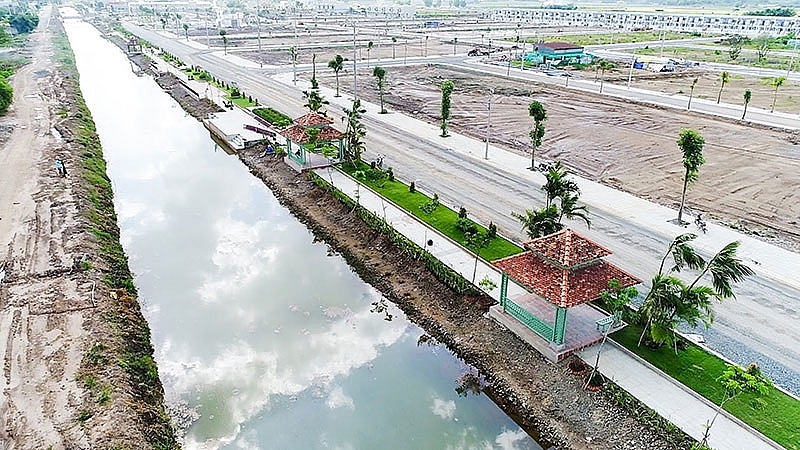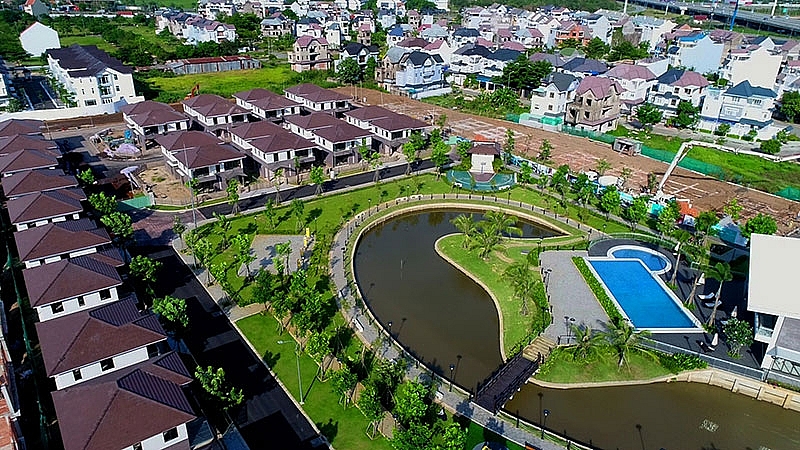Ho Chi Minh City to address lacklustre regulation of landed property
 |
| Ho Chi Minh City to address lacklustre regulation of landed property |
Lack of synchronous development
In the first months of 2017, the Ho Chi Minh City landed property market was bustling with activity. This has raised concerns that a bubble could form without proper control. According to market observers, there is a painful lack of synchronous and professional development in the segment. There are rarely any professional landed property projects with complete infrastructure and on-site amenities in the city.
In 2017, a number of such projects were rolled out into the market, including Singa City by Kim Oanh Real Estate JSC, Rio Bonito by Rio Land Real Estate Investment JSC in District 9, as well as other projects by Tran Anh Group, Cat Tuong Group, and Hien Vinh Group in the northeast of the city. However, the number of units is not big enough to meet the huge demand.
To fill in the market gap, several real estate brokerage companies have bought land to divide into plots for sale. The trend began in District 9 following good news about traffic projects and spread to other districts like Binh Chanh, Nha Be, Hoc Mon, and Cu Chi. The strong and spontaneous development of the land plot segment not only poses a potential risk to customers, but also ruins the city’s planning, according to Tran Trong Tuan, director of the Ho Chi Minh City Department of Construction.
Ngo Quang Phuc, deputy general director of Him Lam Land Corporation, said that, “In general, the segment lacks synchronous development and tight management. Decision No.33/2014/QD-UBND issued by the Ho Chi Minh City People’s Committee does not stipulate a minimum area for separate land parcels. Taking advantage of this, companies conduct land plot business by purchasing large land funds and then separating them into smaller parcels for sale.”
“Most of the city’s policies facilitate developers to build condominiums. At the same time, developers mainly focus on residential housing projects for high profitability. On one hectare of land developers can build a condominium project with hundreds of apartments, but can only break it into dozens of land plots with lower profit,” he said.
Market observers point out that another issue is the unreasonable pricing of land plots due to loose control. When news of planning come out, secondary investors storm the market to sell products with higher prices. In addition, the city does not have any planning area for the segment, so land plot development remains spontaneous and unprofessional, which results in chaos in the market.
Beside these problems, Tran Duc Vinh, general director of Tran Anh Group, said that land plot taxes are levied according to the land price, which remains a bottleneck in Ho Chi Minh City. For two hectares of land, developers need to pay VND2 billion ($88,000) in tax, so they rather build a condominium than break it into land plots, as profits are higher this way.
 |
| Land plot projects with professional development are attracting buyers |
Stability in landed Property
Good news reached the segment at the end of 2017 when the Ho Chi Minh City People’s Committee issued Decision No.60/2017/QD-UBND stipulating a minimum area for separate land plots. This decision took effect on January 1, 2018, replacing Decision 33. Accordingly, land divided into parcels has to obtain land use right certificates according to the Land Law. Land separation must ensure limited usage rights to the adjacent land parcel as prescribed by Article 171. After separation, the combined and adjusted boundary between the new land parcel and the remaining land area should ensure the minimum area, according to the decision.
The minimum area allowed to be separated is 36 square metres for residential land and 500sq.m for agricultural land. According to lawyer Tran Duc Phuong of the Ho Chi Minh City Bar Association, this is a good policy to prevent land plot speculation and spontaneous development, which leads to real estate fever and ruins the city’s planning.
However, he noted that the policy is not enough to reshape the land plot segment for sustainable and even development. There are still some gaps for speculators to distort the market.
“When residents apply for land separation, the authorities should study their purposes to avoid the spontaneous development of land plot projects,” Phuong said, noting that the city should publish the standardised planning and procedures for residents to follow.
According to Vinh, the municipal authorities should have clear planning areas for land plot and condominium development. Also, the city needs to introduce tax policies to provide legal support for land plot projects.
“Vietnamese people prefer living in houses than apartments, so it is inevitable for land plots to always be one of the leading segments in the market. Nevertheless, the legal framework for the segment has yet to be fully developed. Most recently, Ho Chi Minh City has introduced regulations to tighten condominium management in the central business districts. The city has yet to establish policies for land plot projects in the outskirts,” he added.
The developer community said that the stock of land sites for development is becoming scarce. Land prices are on the rise, so it is difficult to develop land plot projects in Ho Chi Minh City. Developers now turn their focus on the neighbouring provinces of Dong Nai, Long An, and Binh Duong which are only 40 kilometres from the bustling Ho Chi Minh City. The provinces have improved traffic connectivity, reasonable land prices, and large land reserves. The market now awaits the tie-up between developers and local authorities to bring such projects to the suburban areas.
What the stars mean:
★ Poor ★ ★ Promising ★★★ Good ★★★★ Very good ★★★★★ Exceptional
Themes: Vietnam Property Outlook 2017
Related Contents
Latest News
More News
- Rare, beautiful, sustainable: the mark of iconic real estate (December 19, 2025 | 08:00)
- Owner-occupied housing stabilises, paving the way for new growth cycle (December 18, 2025 | 17:04)
- Unlocking urban potential of smart cities (December 18, 2025 | 16:50)
- Green finance offers 'passport' for Vietnamese construction, building materials firms (December 15, 2025 | 08:00)
- Gamuda Land commit long-term investment (December 12, 2025 | 11:49)
- HITC ties up with Evolution to develop AI and hyperscale data centres in Vietnam (December 11, 2025 | 12:09)
- Real estate deals boom via high-profile names (December 08, 2025 | 11:32)
- Industrial segment shaped by M&As (December 08, 2025 | 08:00)
- The Privé sets the benchmark for luxury real estate (December 05, 2025 | 08:28)
- TD CASA and the rise of bespoke interior design in luxury living spaces (December 03, 2025 | 14:14)

 Tag:
Tag:





















 Mobile Version
Mobile Version